Homemade Japanese Worcestershire Sauce | 自家製ウスターソース
Learn how to make your own Japanese Worcestershire sauce at home! This savory, sweet, and tangy sauce is essential for Japanese home cooking.
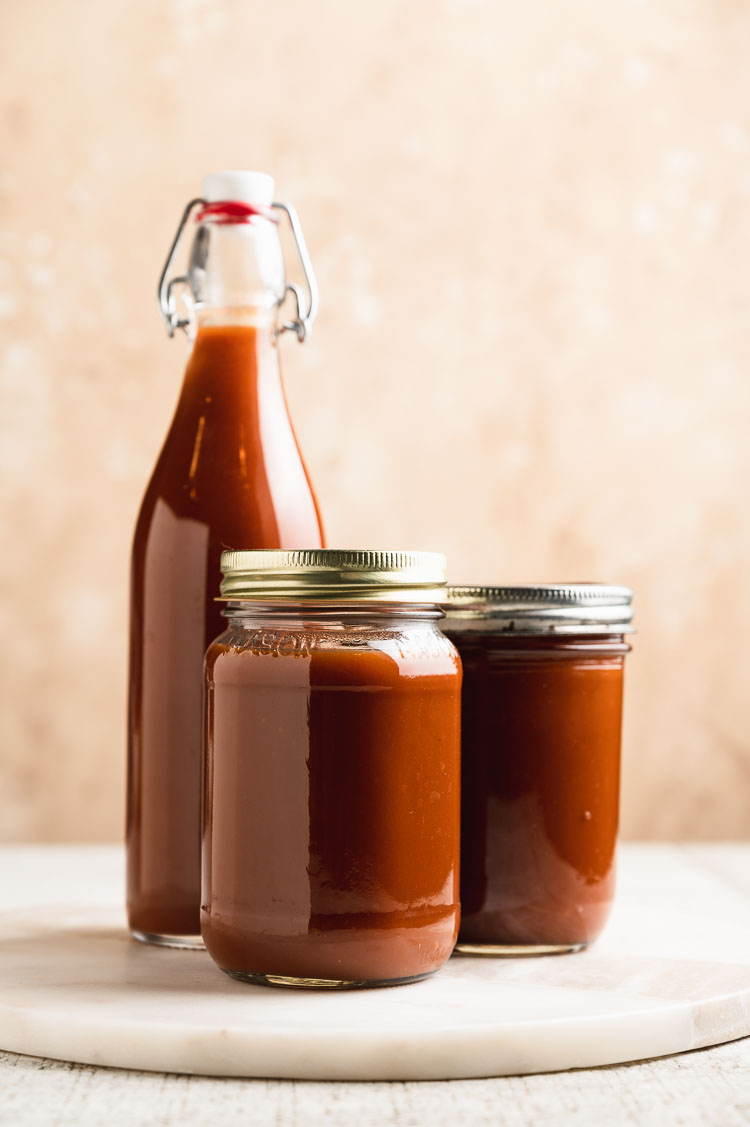
What is Japanese Worcestershire Sauce?
There are actually three different types of Japanese Worcestershire sauce, all generally referred to as “sauce” (ソース). These sauces are similar in flavor and can be used interchangeably. The main difference is the thickness of the sauce.
Usutā Sauce ウスターソース
Usutā Sauce is the thinnest sauce. It is made from fruits, vegetables, and spices, blended and strained to remove the pulp. With no added starch or flour for thickening, this sauce is very watery and is best for use in sauces, soups, and stews (such as Japanese curry, hayashi rice, or yakisoba sauce).
Chūnō Sauce 中濃ソース
“Chūnō” means medium-thick. It contains some starch so it is thicker than Usuta Sauce. Chūnō Sauce is a good all purpose sauce if you only want to have one kind of Japanese Worcestershire sauce. Since it’s thicker than Usutā Sauce it can be used as a topping for dishes like okonomiyaki, takoyaki, tonkatsu, and korokke, but also works well in curry and stew.
Nōkō Sauce 濃厚ソース
Nōkō Sauce is the thickest of all the sauces. You will often see it sold as “Tonkatsu Sauce” and “Okonomi Sauce” (for okonomiyaki), both of which are categorized as Nōkō Sauce. The main difference between the two is that Okonomi Sauce has dashi — usually from bonito, kombu, mushroom, or meat extract — to add umami.
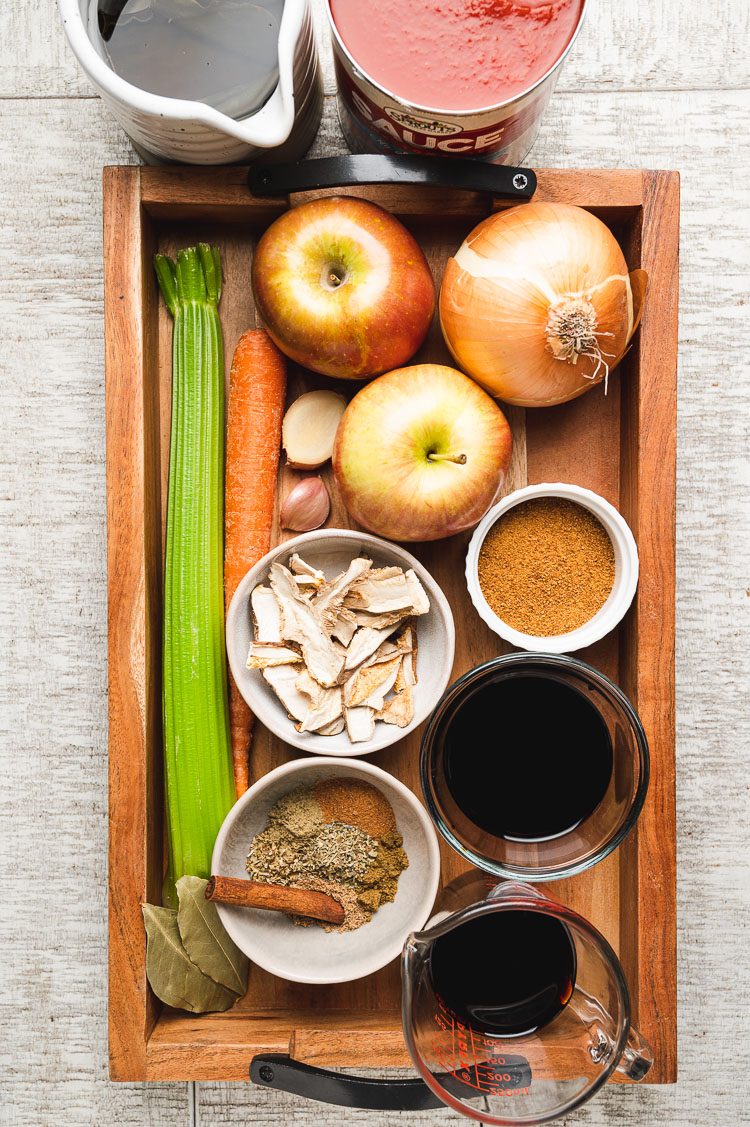
What is Japanese Sauce made from?
Japanese Worcestershire Sauce is made from fruits, vegetables, spices, and seasonings like sugar, soy sauce, and vinegar.
- Dried Shiitake & Kombu Dashi ⟶ For my Japanese Worcestershire sauce, I like to add shiitake and kombu for extra umami flavor.
- Apples & Sugar ⟶ These provide that characteristic sweetness. You can use any sugar or liquid sweetener you prefer. I think overripe persimmons would also be good in place of the apples.
- Tomatoes ⟶ Tomatoes are packed with umami and form the base of our sauce. Use fresh for the best flavor, but canned works as well.
- Spices ⟶ My favorite spices to use are bay leaves, coriander, oregano, cumin, nutmeg, thyme, cinnamon, cloves, sage, and fennel. Feel free to play around with what you have.
- For reference, the Bull Dog brand uses all spice, cloves, cinnamon, sage, thyme, bay leaves, and fennel.
- Spices I do NOT recommend using are cardamom, cayenne, chili powder, turmeric, and curry powder, as these are quite potent and may overpower the sauce.
- Vinegar ⟶ I use a combination of balsamic vinegar, apple cider vinegar, and red wine vinegar. You can use all balsamic for a darker color.
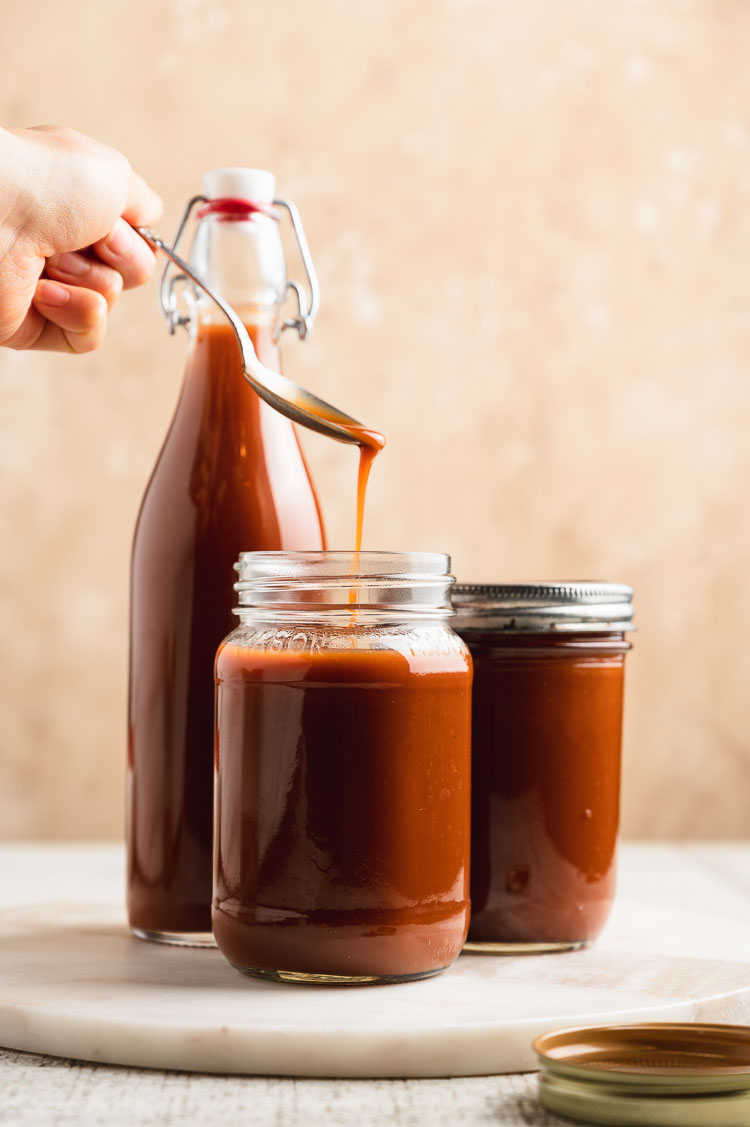
Japanese Worcestershire Sauce FAQ
How do I store Japanese Worcestershire sauce?
Store your sauce in an airtight jar/bottle in the fridge. You can also freeze the sauce if you don’t think you’ll use it all up in time. I like to pour my sauce into ice cube trays and freeze, then transfer the frozen sauce cubes into a freezer bag for easy use.
How long does homemade Japanese Worcestershire sauce last?
This sauce lasts about a month in the fridge, though I’ve kept it for up to 2 months before with no problems. Make sure to keep it tightly sealed and use a clean spoon each time you use some. Always check for mold or off smells, and use fresh ingredients to make the sauce.
Is Japanese Worcestershire sauce gluten-free?
Usutā Sauce is usually gluten-free since it doesn’t contain flour for thickening. Chūnō and Nōkō Sauce are thickened with starch or flour and may contain gluten, so be sure to check the ingredients label. This recipe uses starch and can be made gluten-free by using tamari or a gluten-free soy sauce.
Is Japanese Worcestershire sauce vegan?
Some sauces may contain fish extract. It differs depending on the brand and type of sauce, so always check the ingredients. My go-to store bought sauce is Bull Dog Chuno Sauce.
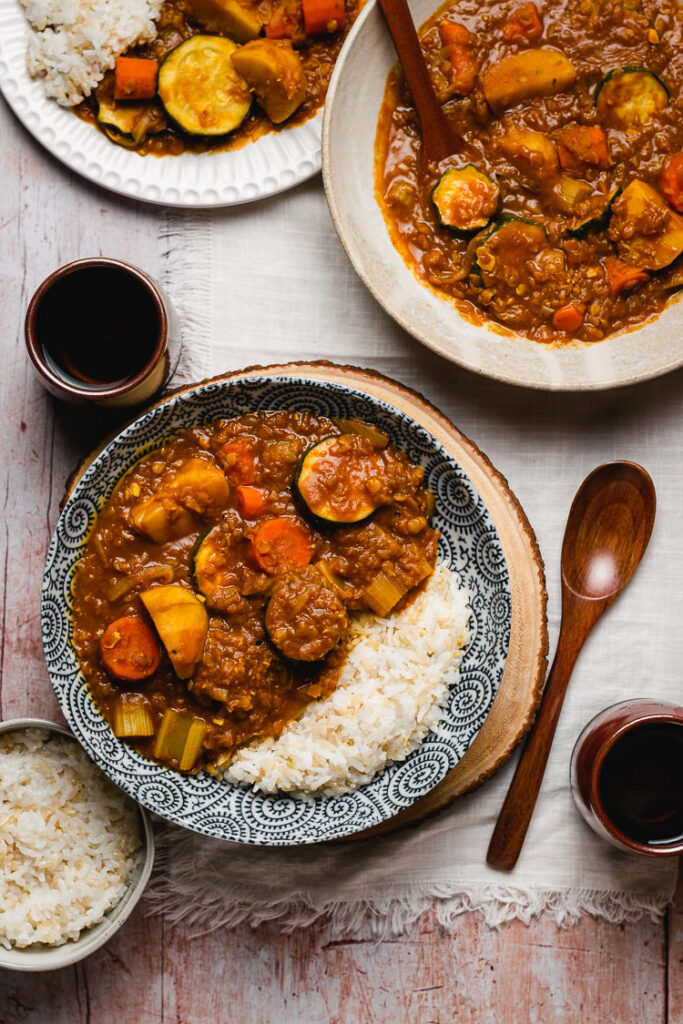
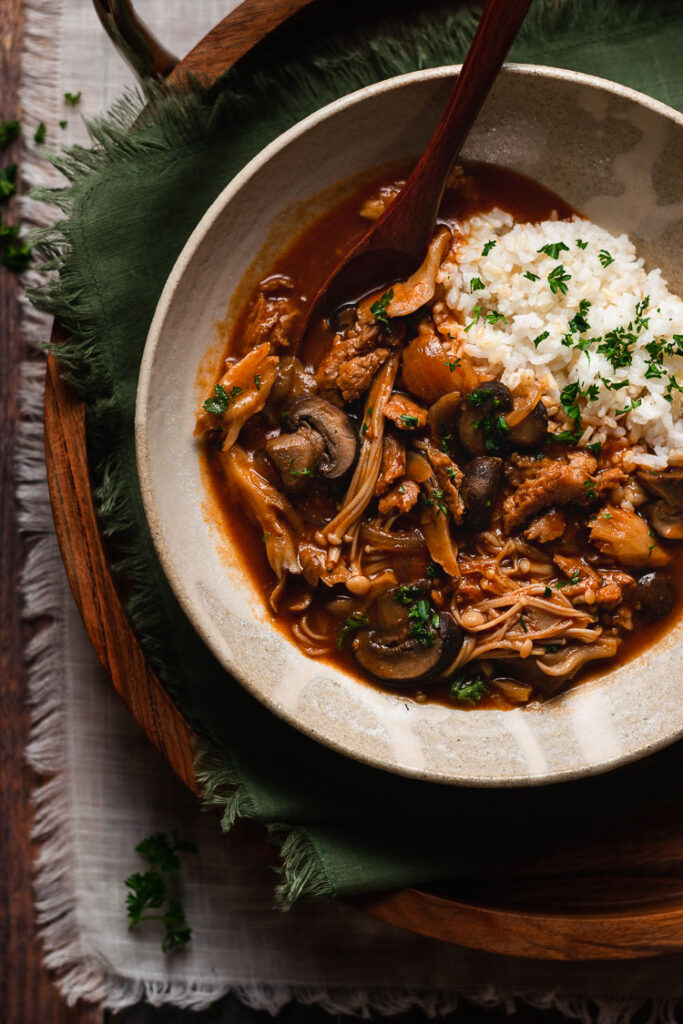
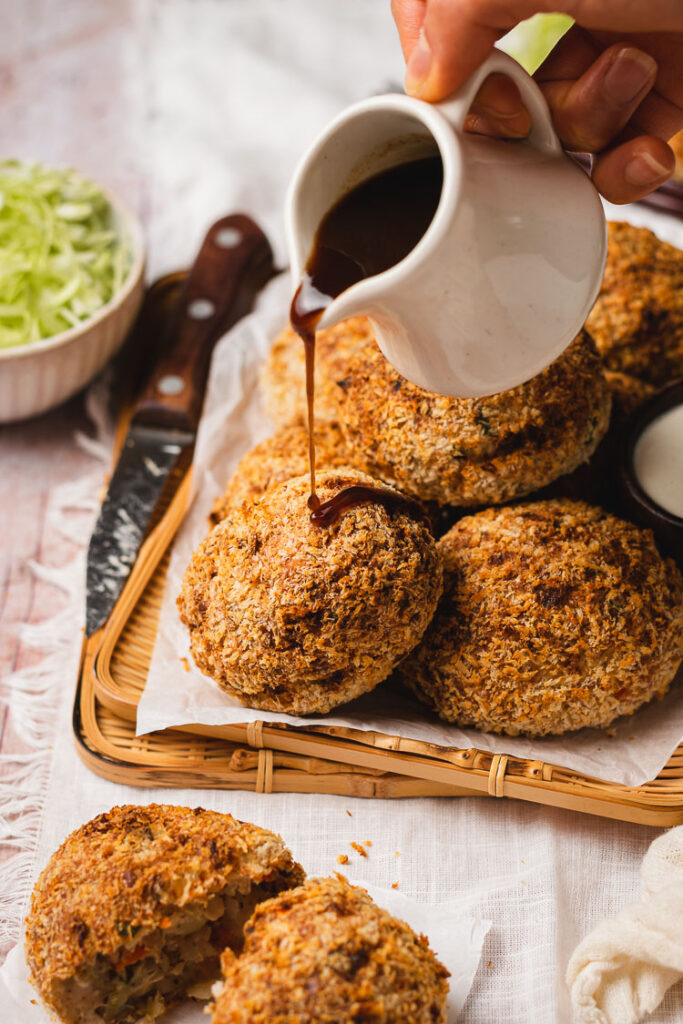
Use Japanese Worcestershire sauce in these dishes!
- Japanese Curry
- Hayashi Rice
- Korokke
- Bibimbap
- Eggplant Chana Masala
- Yakisoba
- Okonomiyaki
- Katsu
- Spaghetti Napolitan
- Hambagu
It’s a great all purpose sauce to add a hint of sweetness and umami to your meal.
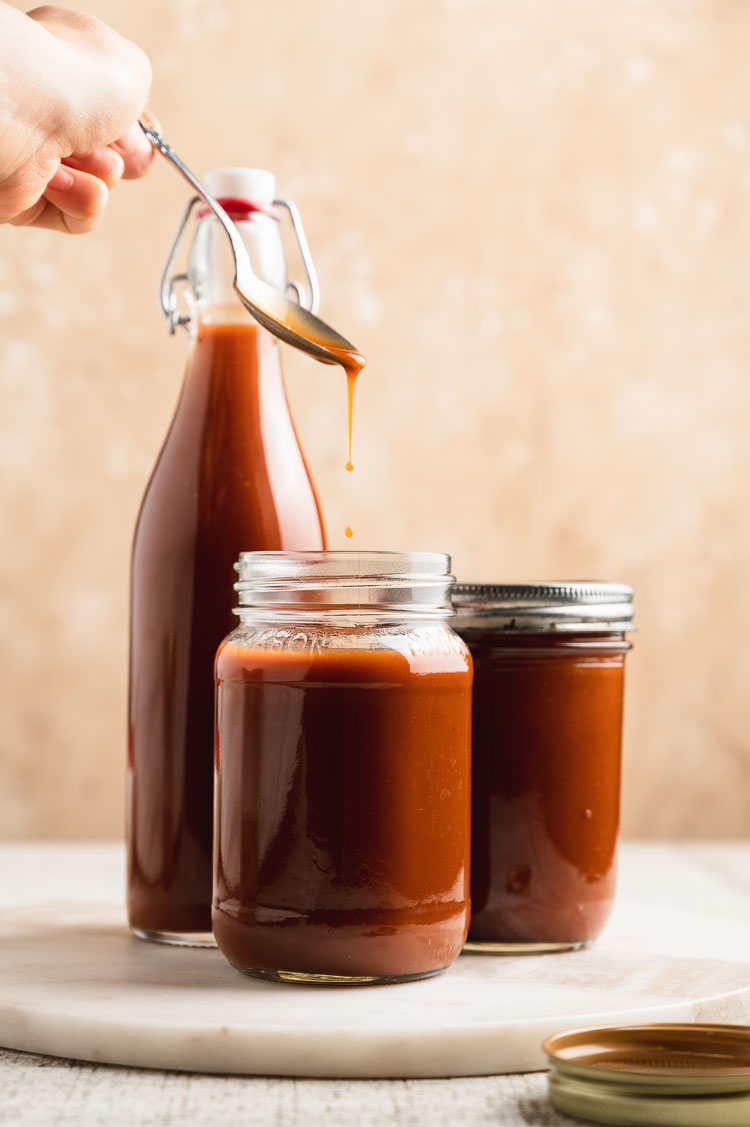
If you try making your own Japanese Worcestershire sauce, don’t forget to leave a comment/rating down below and tag me in your photos on instagram @ellielikes.cooking. I love seeing all of your tasty recreations!
Homemade Japanese Worcestershire Sauce | 自家製ウスターソース
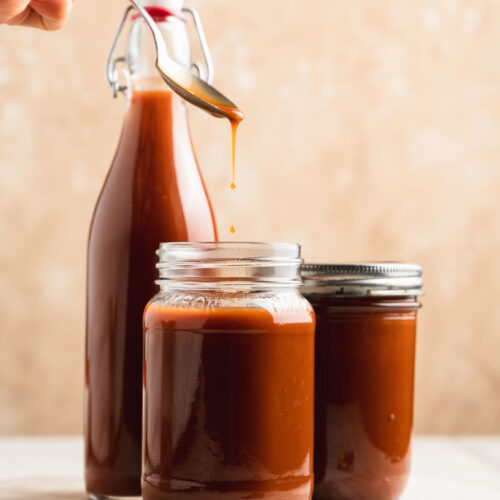
Ingredients
Fruits & Veggies
- 1 yellow onion
- 2 pounds fresh tomatoes or one 29oz can of whole, peeled tomatoes
- 1 rib of celery
- 1 carrot
- 2 medium apples**
- 1 inch knob of ginger
- 1 clove of garlic
- 3 dried shiitake (10g)
- 2 cups kombu dashi**
Spices**
- 2 bay leaves
- 1 tsp ground coriander
- 1 ¼ tsp ground cloves
- 1 tsp oregano
- 1 tsp thyme
- 1 tsp ground cumin
- 1 tsp ground nutmeg
- 1 cinnamon stick or ½ tsp ground cinnamon
Seasonings
- ⅓ cup soy sauce or tamari for gluten-free
- 6 tbsp vinegar (balsamic, apple cider, red wine)**
- ¼ cup sweetener of choice**
- salt and pepper to taste
Thickener (optional)
- 3 tbsp
tapioca flour/arrowroot flour**
Instructions
Stovetop
- Simmer fruits and veggies: Roughly chop the fruits and veggies and add to a large pot with the dashi. Bring to a boil, lower to simmer, cover, and simmer for 1 hour. If using kombu, remove after 20 minutes of gentle simmering, or sooner if you notice it starting to melt into the sauce.
- Add spices and simmer: Stir in the spices and simmer for another hour.
- Blend: Turn off the heat and remove the cinnamon stick and bay leaves. Use an immersion blender to blend everything together, or transfer to a blender in batches. Be careful not to over-blend — you don't want a super smooth mixture — or you won't be able to strain out the pulp effectively.
- Strain: You want to use a very fine mesh strainer to remove as much of the pulp as possible (this will result in a very smooth sauce with a longer shelf life). I recommend using a nut milk bag if possible, but be aware that it will stain your nut milk bag orange/red. Let the mixture cool first until cool enough to handle since you will be using your hands to squeeze out the liquid. (Save the pulp! It's full of fruit and veggie puree and flavor from the spices, great in stews and curries.)
- Add seasonings: Add the strained liquid back to the pot and stir in the seasonings. Bring to a simmer and cook for 30 minutes.
- Add thickener (optional): For a thicker sauce, mix flour with some cold water (about 2 tbsp, just enough to dissolve the flour) until smooth and no lumps remain. In the last 3-5 minutes of simmering, add in the flour mixture. Stir frequently until sauce thickens.
- Cool and Store: If you notice small clumps of flour in your sauce, strain it again before storing. You can just pour it through a fine mesh strainer or sieve. Let cool completely, then transfer to bottles or jars, seal, and store in the fridge for 1-2 months. You can also freeze the sauce in ice cube trays, then transfer to a freezer-safe bag once frozen.
Instant Pot
- To make it in the Instant Pot, follow the stovetop directions but use these times instead:
- Simmer fruits and veggies: Pressure cook 20 minutes at high pressure, quick release. OR if using kombu, pressure cook 30 minutes at low pressure, quick release, and remove kombu.
- Add spices and simmer: Pressure cook 20 minutes at high pressure, quick release.
- Add seasonings: Sauté on low for 30 minutes.
Notes

*Disclosure: This page may contain affiliate links. As an Amazon Associate I earn from qualifying purchases, but the price remains the same to you. Thank you for supporting Ellie Likes Cooking!
Save for later!
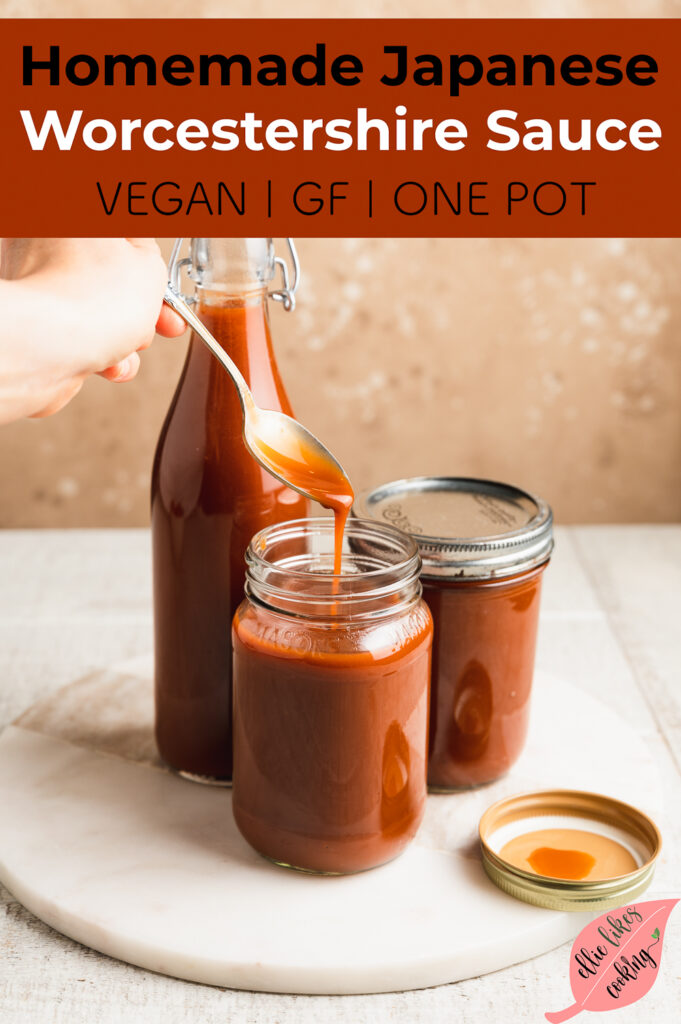

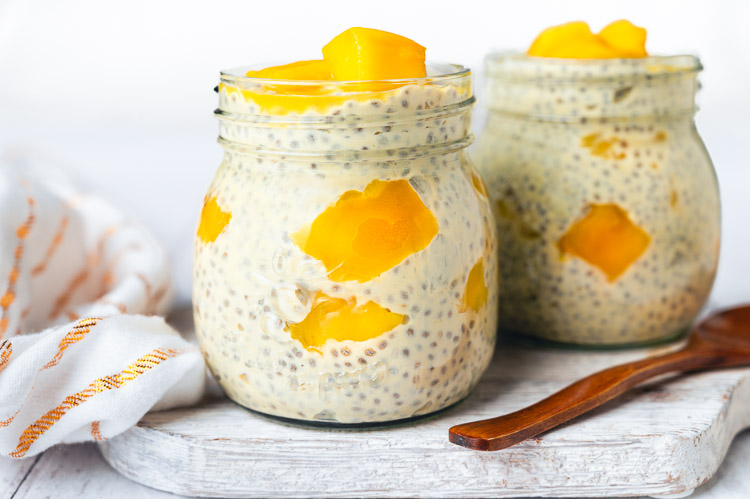
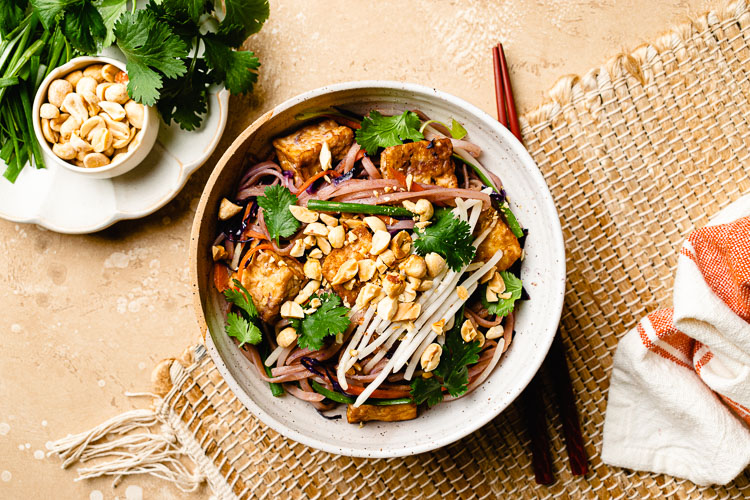
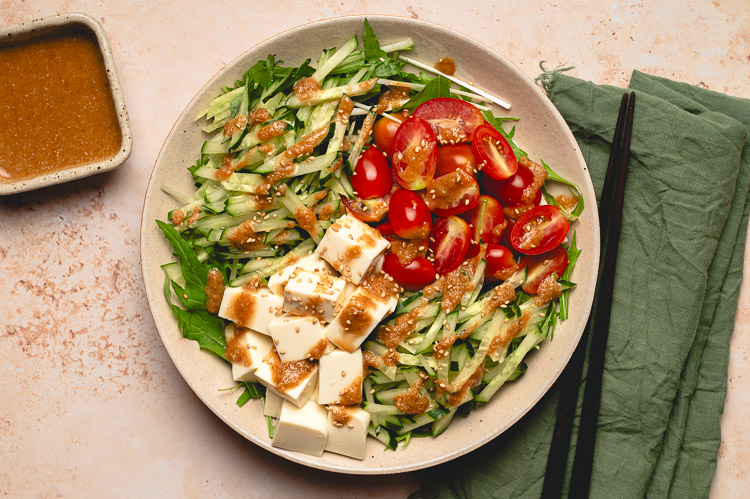
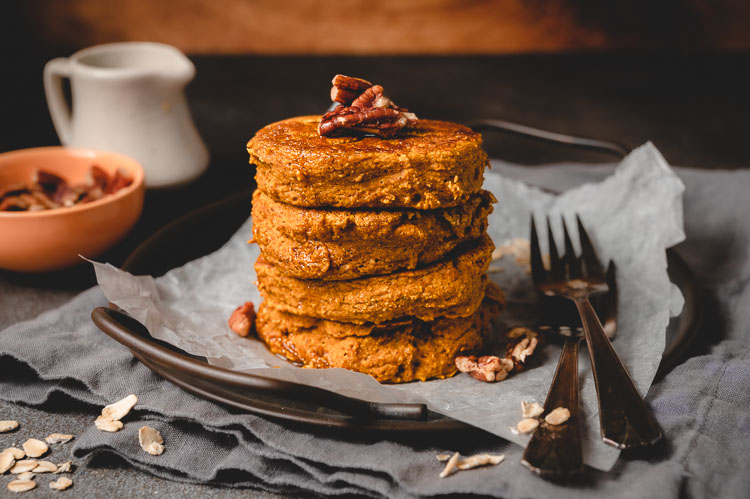


hello may i know the pulp can be used for ….. ?
Hi Jess, I usually add the pulp to Japanese curry but it could also work for other thick stews or chili. I think you could also add it to veggie burgers/fritters/meatballs, but I’m still experimenting with ways to use it! I store it in a bag in my freezer if I’m not going to use it within 3 days.